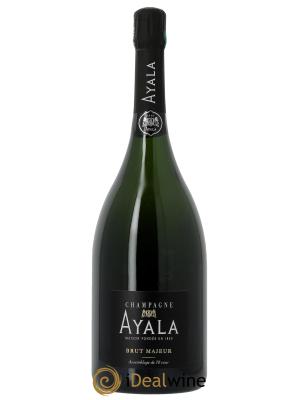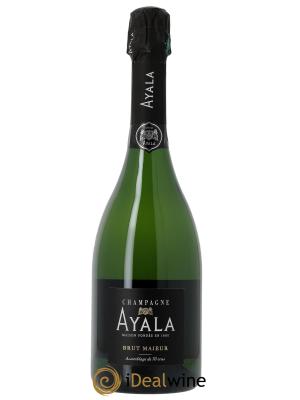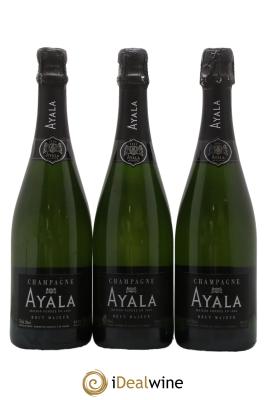Wine for sale: Ayala




Ayala
One of the oldest Champagne houses, it has been in the hands of some of the biggest names in the region. A strong heritage, it delivers Champagnes made to perfection.
Maison Ayala is one of the oldest champagne houses and has been in Aÿ since 1860. The founder was Edmond de Ayala but it was also thanks to his younger brother Fernand de Ayala that the family domain developed, particularly in the United Kingdom where the latter settled. Maison Ayala was a pioneer in producing dry champagne from the second half of the 19th century. Maison Ayala began a new chapter in its history since its acquisition in January 2005 by the company Jacques Bollinger. Bollinger's “little brother"", presided over by Hervé Augustin (and his bow-ties), follows in its footsteps. Furthermore, Hervé Augustin, a native Champenois, managed Champagne Bollinger from 2000 to 2005. The maison lost its 25-hectare vineyard during this acquisition (which remained with the former owners, the Frey group), but the grape supply brought by Bollinger meant that sales could increase. The wines produced are known for being precise, airy and fresh, the blends give pride of place to the Chardonnay and vinification is done in small stainless-steel vats with very low dosage. Today, it is Caroline Latrive who is the cellar master of this very famous Champagne house. Many of the wines which are only slightly dosed, or indeed not at all, remain longer in the cellar. As Ayala wishes to maintain the primary aromas of its wines and their notes of freshness, the wines are often aged from 2.5 to 3 years in the cellar. Another point to make about the quality: Ayala indicates on each bottle the disgorgement date so everyone can judge the right moment to consume his or her champagne. For example, undosed champagne must be drunk within two years of its disgorgement date, while Brut Majeur is kept for 4 years in optimal conditions.
- Blanc de Blancs Extra-Brut Ayala 2016€49
- Blanc de Blancs Extra-Brut Ayala 2014€52
- Perle d'Ayala Ayala 2013€51
- Blanc de Blancs Extra-Brut Ayala 2007€51
- Perle d'Ayala Ayala 2006€86
- Perle d'Ayala Ayala 2005€58
- Perle d'Ayala Ayala 2002€88
- Brut Nature Ayala 2000€59
- Perle d'Ayala Ayala 1999€88
- Perle d'Ayala Ayala 1998€83
- Perle d'Ayala Ayala 1997€103
- Blanc de Blancs Extra-Brut Ayala 1996€86
- Blanc de Blancs Extra-Brut Ayala 1983€136
- Brut Nature Ayala 1982€185
- Extra Quality Brut Ayala 1976€210
- Extra Quality Brut Ayala 1970€90
- Extra Quality Brut Ayala 1969€188
- Brut Nature Ayala 1962€175
- Majeur Brut Ayala €30
- Zéro Dosage Ayala €53
- Rosé Majeur Ayala €44
- Brut Nature Ayala €51
- Extra Quality Brut Ayala €37





